Originally, I had plans to attend a concert featuring Pure Prairie League, Poco, and Orleans this weekend, an event I was greatly anticipating.
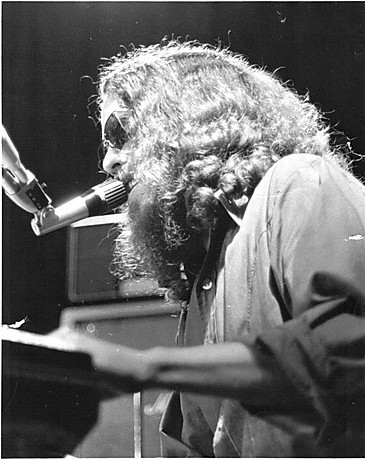
Sherman Kelly onstage in the 1970s. (Photo courtesy of Sherman Kelly)
However, the COVID-19 pandemic disrupted those plans. As of early May 2020, the prospect of attending any concerts this year remains uncertain. Despite this, in the weeks leading up to the would-be concert, I found myself watching YouTube videos of these bands, particularly drawn to Orleans’ rendition of the classic King Harvest song, “Dancing in the Moonlight.”
Penned by Sherman Kelly, “Dancing in the Moonlight” has always resonated as one of my favorite songs from the 1970s. Upon its release on July 9, 1972, it quickly became a significant hit for King Harvest, reaching No. 10 on the Cash Box Top 100 singles chart, No. 13 on the Billboard Hot 100, and No. 22 on the Billboard Easy Listening chart.
While often browsing comments on YouTube videos, I was surprised to discover a comment from Sherman Kelly himself on an Orleans video of “Dancing in the Moonlight,” posted about five months prior.
Could it be?
Given my passion for the stories behind iconic songs and albums – the very essence of The Vinyl Dialogues book series – my immediate thought was to reach out to Sherman Kelly. I wanted to ask if he would be willing to share the fascinating story behind the creation of “Dancing in the Moonlight.”
To my delight, he agreed. And the story he unveiled is truly remarkable.
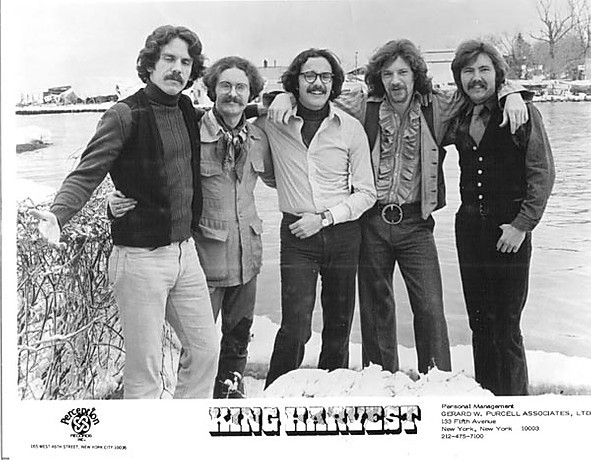
King Harvest in 1972. (Photo courtesy of Sherman Kelly)
In 1969, Kelly and some friends operated a nightclub in St. Thomas, Virgin Islands. One day, they decided to charter a 65-foot yacht for a day trip to St. Croix. Unbeknownst to him, Kelly was susceptible to seasickness, and he and his girlfriend became severely ill during the voyage.
Upon arriving in St. Croix, the group disembarked in a dinghy to find dinner. However, Kelly and his girlfriend were still unwell and had no appetite.
The rest of the group obtained food and decided to return to the yacht for the night. Looking out at the harbor, Kelly and his girlfriend observed the boat’s mast swaying dramatically. Deciding against risking further seasickness, they chose to stay in town overnight.
There was a significant problem: In his disoriented, seasick state, Kelly had left his wallet on the yacht, leaving him without money or credit cards for a hotel. They approached a small inn, explained their predicament to the innkeeper, and offered to settle the bill in the morning when Kelly could retrieve his wallet.
“And he said, ‘Sure, you can stay here if your girlfriend will sleep with me,'” Kelly recounted in a telephone interview from his home in New York’s Finger Lakes region.
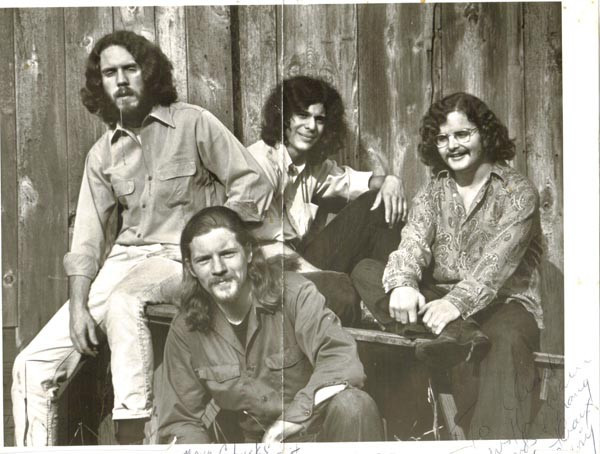
Boffalongo, circa 1970. (Photo courtesy of Sherman Kelly)
After being turned away at a second inn, Kelly’s girlfriend suggested, “It’s a beautiful night. Why don’t we just stretch out on the beach?”
“So we did,” Kelly said. “And that’s all I remember very clearly.”
The events that followed were reconstructed from fragments of Kelly’s memory and accounts from others. While sleeping on the beach, Kelly and his girlfriend were brutally attacked by a St. Croix street gang. Five gang members, wielding baseball bats, severely beat Kelly. His girlfriend was raped by the gang leader while the others waited in line. However, Kelly’s girlfriend later reported that Kelly regained consciousness during the assault and fought back, creating enough disturbance to frighten off the attackers.
With Kelly drifting in and out of consciousness, they managed to follow the lights along the shore and eventually reached the only hospital in St. Croix. Kelly and his girlfriend are believed to be among the early victims of the notorious Fountain Valley Gang, who in 1972 murdered eight tourists and wounded eight more, devastating St. Croix tourism for years.
“I woke up to the sound of my hospital roommate screaming in pain. Finally, the screaming stopped, and I heard two doctors talking about him. ‘That’s it, he’s gone,’ one doctor said about the other patient. ‘What about him, do you think he’s gonna make it?’ And the other doctor said, ‘No, I doubt it.’ I realized they were talking about me,” Kelly recalled.
Despite the grim prognosis, Kelly survived. He spent several days in the St. Croix hospital before returning to St. Thomas, where he recuperated at a friend’s home. Eventually, he was well enough to return to New York, where doctors at New York Hospital re-fractured and reset the bones in his face and addressed his other injuries.
Back home in Ithaca, New York, still in pain and plagued by constant headaches, Kelly was in no condition to perform with a band. However, this didn’t stop him from songwriting.
It was during this period of recovery that he started writing verses for a song, verses that would later become the lyrics for “Dancing in the Moonlight.”
“I envisioned an alternate reality, a dream of a peaceful and joyous celebration of life. It was simply me imagining a better world than the one I had just experienced in St. Croix,” Kelly explained.
An unspeakably traumatic experience that nearly cost him his life became the catalyst for a beautiful song.
“It was amazing. People liked the song right from the start. I liked it, but I wouldn’t have predicted that it would become a big hit,” Kelly admitted.
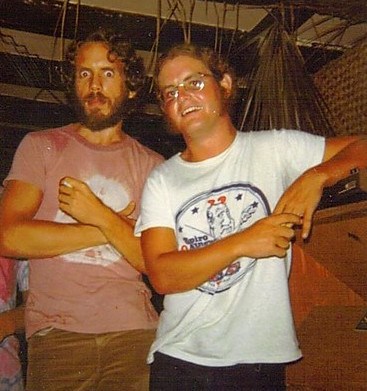
Sherman Kelly, left, and Larry Hoppen, who would later form the band Orleans. (Photo courtesy of Sherman Kelly)
King Harvest wasn’t the first to record the song. In 1970, Kelly joined Boffalongo with his brother, Wells Kelly, guitarist Larry Hoppen, bassist and keyboardist Dave “Doc” Robinson, and Peter Giansante. “Dancing in the Moonlight” appeared on Boffalongo’s 1970 album “Beyond Your Head,” featuring Sherman Kelly on lead vocals, Wells Kelly on drums, and Larry Hoppen on lead guitar.
Kelly describes his vocal performance on that version as “horrible.”
“The first time I was in a recording studio for that version, we had these producers who thought it was a good idea to give me cocaine. That was probably the worst idea,” Kelly said. “I found myself in the vocal booth, where there were a lot of people distracting me. And the producers would give me more cocaine to keep me doing takes until my voice was so distorted and so weird.”
Despite Kelly’s reservations about the vocal, the Boffalongo version gained regional popularity. A group called High Broom also recorded the song in 1970, releasing it on Island Records, but it did not chart.
When Boffalongo disbanded, Wells Kelly joined King Harvest, a French-American group then based in Paris, whose lead singer was Doc Robinson, also formerly of Boffalongo. Wells Kelly introduced “Dancing in the Moonlight” to the band.
The King Harvest version of “Dancing in the Moonlight” features Robinson on lead vocals. It was released as a single with “Lady Come Home” as the B-side.
Once the song became a hit, King Harvest invited Sherman Kelly to tour with them in the summer of 1972. During live performances, Robinson sang lead vocals on the song, and Sherman Kelly provided harmonies.
“Doc had a pretty good voice, better than mine,” Kelly said. “I remember one critic said about me, ‘As a singer, Sherman Kelly is not too bad of a songwriter.’ That was amusing, and true.”
However, life on the road with King Harvest wasn’t for Kelly. He only toured with the band for that one summer.
“Imagine yourself in your twenties, and you’ve written a hit song, you have some chart action, and you’re traveling around. It was fun for a while,” he said. “But life on the road is ridiculous. I didn’t really care for it after a while.”
Wells Kelly eventually left King Harvest and reconnected with John Hall. Wells Kelly, Hall, and Harvey Brooks had been in a band called Thunderfrog in the late 1960s. Along with Larry Hoppen from Boffalongo, Wells Kelly and Hall formed Orleans, which also recorded their own version of “Dancing in the Moonlight.” The current lineup of Orleans, which still includes Hall and Larry Hoppen’s brothers, Lance and Lane Hoppen, continues to include “Dancing in the Moonlight” in their setlists. Larry Hoppen passed away in 2012.
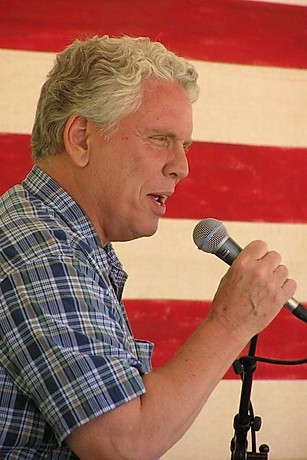
Sherman Kelly today. (Photo courtesy of Sherman Kelly)
Sherman Kelly graduated from Cornell University in 1967 with a bachelor’s degree in psychology and English. He furthered his studies at Alliance Francaise in Paris, the University of Lausanne in Switzerland, and the New School for Social Research in New York City, all before writing “Dancing in the Moonlight.”
Following the tragic death of his brother Wells Kelly in 1984 – who died on the doorstep of a London apartment after a night out while touring with Meat Loaf’s band – Sherman Kelly found it too painful to continue in music. He pursued other interests, earning a master’s degree in social work and psychotherapy from Syracuse University in New York. For many years until his retirement, he worked as a psychotherapist.
In 2008, he released an album titled “Burnin’ the Candle,” which included unfinished songs he and Wells Kelly had co-written.
In 2000, Toploader covered “Dancing in the Moonlight,” achieving another hit with the song. It has also been featured in various films and television shows. In 2017, “Dancing in the Moonlight” appeared in the video game “Guardians of the Galaxy: The Telltale Signs” and serves as the opening theme for the second episode. The enduring appeal of “Dancing in the Moonlight” is a testament to its uplifting message, born from a dark and unexpected origin.

